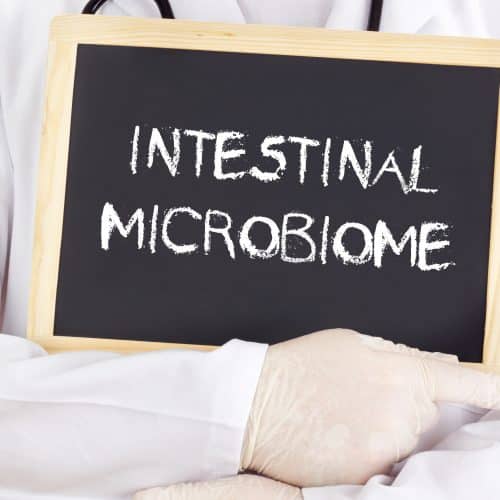
The National Institutes of Health Human Microbiome Project (HMP) funding of research to characterize the human microbiota and analysis of its role in human health and disease has resulted in thousands of research publications. While the long-term outcomes of this project may become clinically relevant, an ideal microflora profile in the gastro-intestinal (GI) tract is currently unknown. Nonetheless, the impact of the commercialization of this research field may impact your interaction with patients as they question if the results of this research should affect their diet or medical care. Here’s a summary of what is known, to date, and what this may mean for discussions with patients and peers regarding care.
Microbes are present on our skin and throughout the GI tract beginning in our mouths. These microbes, including bacterial, archaeal, and fungal species, are most prevalent in our colons and play a role in health by bioconversion of nutrients, protection against pathogenic microbes, and production of important substances such as vitamins and short chain fatty acids. Other organs and fluids have few or no microbes such as blood, amniotic fluid, placenta, or urine.
Nutrition plays a critical role in growth and physiology including influencing the GI microbiome. This has raised curiosity among researchers about whether the combination of nutrition and the GI microbiome composition influence health. Low and behold, associations of microbiome diversity and diseases including diabetes, obesity, arthritis, inflammatory bowel diseases have been described. However, it is paramount to remember that causality between potential relationships of nutrition, microbiota and an individual’s health has not yet been defined.
Undoubtedly you and your patients may discuss the fact that the gut’s microbial population can be acutely influenced by food. The GI microbiome responds quickly to changes in food, gastrointestinal illness, or travel. This raises the question of whether interventions to change the microbiome should be considered. For example, individuals with inflammatory bowel disease (IBD) have chronic inflammation, may take medications, and might have a modified diet including altered caloric intake. All of these are confounding factors that may independently influence the microbes. Nonetheless, probiotics and fecal microbiota transplant (FMT) are currently being evaluated for possible management of IBD. Interestingly, each individual’s microbiome is relatively stable over time raising the question of long-term effects of any efforts to acutely modify the microbiome.
One of the most active areas of therapeutic research with the microbiome is in GI immune function. It is not surprising that oral or systemic antibiotics and immunotherapies may negatively impact the gut microbiome. Long-term antibiotic use predisposes individuals to Clostridium difficile infections resulting in diarrhea, fever, and loss of appetite. Studies suggest that FMT, in which a stool sample from a healthy donor is transplanted into the intestinal tract of a recipient, may be an effective treatment for Clostridium difficile. The American Gastroenterological Association provides a clinicians guide and review of the emerging evidence for this treatment, here.
Interest in the microbiome is not limited to those with a therapeutic focus. Many individuals are also interested in dietary changes to improve or maintain a healthy microbiome. This may be partly spurred by web-based information that may appear compelling but has little credibility. For example, some suggest eliminating various diet components or foods. There is limited research in animals which reports that non-caloric sweeteners influence the GI microbiome. While the relevance of these studies is minimal due to study design and use of animals, some patients may question consuming non-caloric sweeteners. A 2016 review of metabolism and safety of sweeteners explains the potential impact. In summary, aspartame and steviol glycosides are unlikely to affect gut microbiota due to their metabolism. While sucralose is present in the colon because it is excreted, unchanged in the feces, any effect is considered speculative. It is important to note that some research suggests that microbiome diversity is improved by dietary diversity. If true, elimination diets are the antithesis of recommendations that clinicians should be making.
For example some research suggests that high dietary diversity among hunter-gatherers and agriculturalists increases the microbiome diversity compared with urban residents consuming a western diet. While there are confounding lifestyle factors in these studies, other findings show that consumption of fiber and carbohydrates influence the microbiome diversity. It has been suggested that individuals can modify their microbiome by consuming more fiber and probiotic supplements. While the correlation is not causal, insufficient intake of fiber is associated with health concerns. As a nutrient of concern for Americans, and many others, your patients should be encouraged to consume the recommended daily intake of fiber which is 14 grams of fiber per 1000 Calories.
Researchers are hopeful that the HMP will better characterize the role of the microbes and identify novel therapies for health outcomes. However, without known cause-and-effect relationships, dietary recommendations to alter the microbiome and improve health and wellness are premature.

